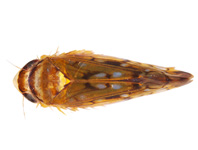Abstract
We describe a new Pristimantis from French Guiana, northern South America, which is mainly distinguished from known phenotypically related congeners (i.e. species from the polyphyletic unistrigatus species group) occurring at low and middle elevations in the Guiana Shield by the combination of a distinct tympanum, a lower ratio of tibia vs. hand length, a reddish groin region, and a distinct advertisement call consisting of clusters of generally four short notes. The new species inhabits pristine primary forests on the slopes of isolated massifs reaching more than 400 m elevation, and seems not to occur below ca. 200 m above sea level. Such a sharp altitudinal limit suggests a strong influence of thermal variation on the distribution of the species, and therefore a potential sensitivity to climate change. With only nine isolated populations documented so far, the new species should be prioritized for conservation. Historical climate fluctuations during the Quaternary are likely responsible for the distribution pattern of the new species.

